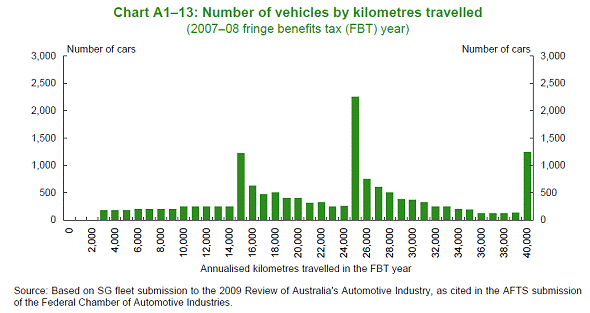The Gillard Government will change the fringe benefit treatment of cars to remove the unintended incentive for people to drive their vehicle further than they need to, in order to obtain a larger tax concession.
Phasing out the current car fringe benefit treatment is a sensible reform from both a taxation and an environmental perspective, and implements another recommendation of the Australia's Future Tax System Review (see attachment).
Under the 'statutory formula' method, a person's car fringe benefit is determined by multiplying the relevant statutory rate by the cost of the car. Currently, the sliding scale of rates provides an increased tax concession for salary-sacrificed or employer-provided vehicles that are driven further.
The Government will replace the current rates with a single flat rate of 20 per cent that applies regardless of the distance travelled.
This measure improves the underlying cash balance by $953.9 million over the forward estimates.
This reform is a step in the right direction for Australian families, the environment and the Budget bottom line.
This reform will only apply to new vehicle contracts entered into after 7:30pm (AEST) on 10 May 2011, and will be phased in over four years as shown below:
Distance travelled during the FBT year (1 April – 31 March) |
Statutory rate (multiplied by the cost of the car to determine a person's car fringe benefit) |
||||
|
Existing contracts |
New contracts entered into after 7:30pm (AEST) on 10 May 2011 |
||||
|
From 10 May 2011 |
From 1 April 2012 |
From 1 April 2013 |
From 1 April 2014 |
||
|
0 – 15,000 km |
0.26 |
0.20 |
0.20 |
0.20 |
0.20 |
|
15,000 – 25,000 km |
0.20 |
0.20 |
0.20 |
0.20 |
0.20 |
|
25,000 – 40,000 km |
0.11 |
0.14 |
0.17 |
0.20 |
0.20 |
|
More than 40,000 km |
0.07 |
0.10 |
0.13 |
0.17 |
0.20 |
Compared to the current statutory rates, a single rate of 20 per cent will:
- increase the tax concession provided for vehicles driven less than 15,000 kilometres a year;
- maintain the current tax concession provided for vehicles driven between 15,000 and 25,000 kilometres a year; and
- decrease the tax concession provided for vehicles driven more than 25,000 kilometres a year.
People who use their vehicle for a significant amount of work-related travel will still be able to use the 'operating cost' (or 'log book') method to ensure their car fringe benefit excludes any business use of the vehicle.
CANBERRA
10 May 2011
ATTACHMENT
Australia's Future Tax System Review
This reform implements recommendation 9(b) of the Australia's Future Tax System Review (the tax review), which states:
'The current formula for valuing car fringe benefits should be replaced with a single statutory rate of 20 per cent, regardless of the kilometres travelled.'
The tax review made the following findings on the statutory formula method for determining car fringe benefits:
'The statutory formula applies so that the taxable value of a car fringe benefit falls as total kilometres rise. At the margin, this may create an incentive for individuals to travel additional kilometres to reduce the taxable value of their car (particularly at the points at which the statutory fraction falls – 15,000, 25,000 and 40,000 kilometres) (see Chart 1‑13). This increases pollution and road congestion.'

